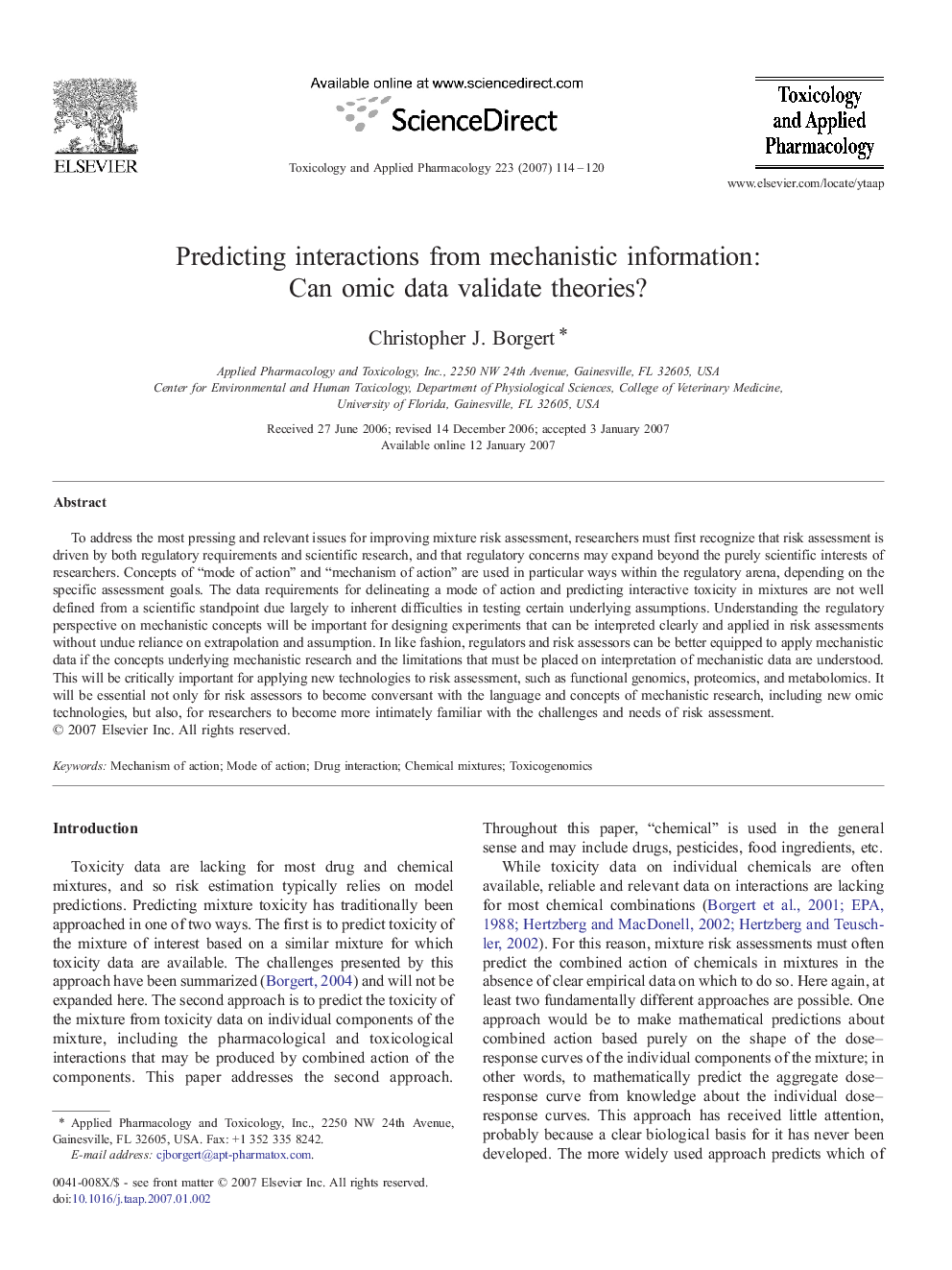| Article ID | Journal | Published Year | Pages | File Type |
|---|---|---|---|---|
| 2571843 | Toxicology and Applied Pharmacology | 2007 | 7 Pages |
To address the most pressing and relevant issues for improving mixture risk assessment, researchers must first recognize that risk assessment is driven by both regulatory requirements and scientific research, and that regulatory concerns may expand beyond the purely scientific interests of researchers. Concepts of “mode of action” and “mechanism of action” are used in particular ways within the regulatory arena, depending on the specific assessment goals. The data requirements for delineating a mode of action and predicting interactive toxicity in mixtures are not well defined from a scientific standpoint due largely to inherent difficulties in testing certain underlying assumptions. Understanding the regulatory perspective on mechanistic concepts will be important for designing experiments that can be interpreted clearly and applied in risk assessments without undue reliance on extrapolation and assumption. In like fashion, regulators and risk assessors can be better equipped to apply mechanistic data if the concepts underlying mechanistic research and the limitations that must be placed on interpretation of mechanistic data are understood. This will be critically important for applying new technologies to risk assessment, such as functional genomics, proteomics, and metabolomics. It will be essential not only for risk assessors to become conversant with the language and concepts of mechanistic research, including new omic technologies, but also, for researchers to become more intimately familiar with the challenges and needs of risk assessment.
